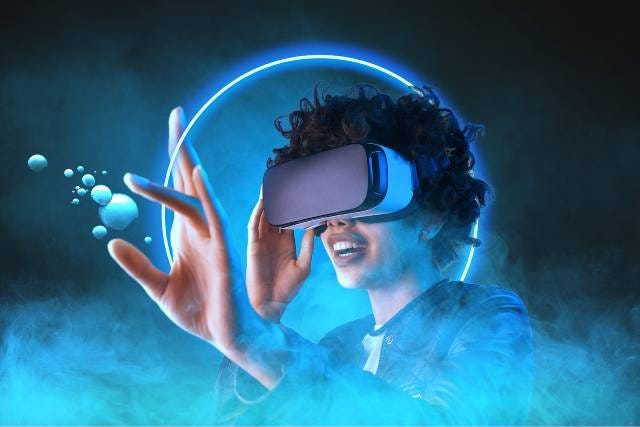Description
Introduction of Next-Gen Virtual & Augmented Reality
Welcome to Next-Gen Virtual & Augmented Reality! Virtual Reality (VR) and Augmented Reality (AR) are transforming the way we interact with digital content and the physical world, creating immersive experiences that enhance learning, entertainment, and productivity. This training will explore the latest advancements in VR and AR technologies, tools, and applications across various industries. Participants will learn how to design, develop, and deploy engaging VR and AR experiences, utilizing cutting-edge techniques and frameworks to shape the future of user interaction and engagement.
Prerequisites
To fully benefit from this course, participants should have:
- Basic understanding of VR and AR concepts (knowledge of immersive technologies and their applications)
- Familiarity with 3D modeling and design tools (e.g., Blender, Unity, or Unreal Engine)
- Programming skills in languages like C# or C++ (experience with game development is beneficial)
- Awareness of user experience (UX) principles (optional but recommended)
Table of Contents
1: Introduction to Virtual and Augmented Reality
- Understanding VR and AR: Key Concepts and Differences
- Overview of VR and AR technologies
- The role of mixed reality (MR) and extended reality (XR)
- Historical Context and Evolution of Immersive Technologies
- The journey of VR and AR from inception to present
- Current trends and future directions in immersive experiences
2: Hardware and Software for VR and AR Development
- VR and AR Hardware Overview
- Headsets, sensors, and peripherals: Analyzing market options (Oculus, HoloLens, etc.)
- Understanding performance requirements and hardware specifications
- Development Platforms and Tools
- Overview of popular platforms for VR and AR development (Unity, Unreal Engine)
- Essential libraries and frameworks for building immersive experiences
- Hands-On Lab: Setting up a VR/AR development environment(Ref:
3: Designing Immersive Experiences
- Principles of Experience Design in VR and AR
- User-centric design approaches for immersive technologies
- Best practices for creating engaging and intuitive interactions
- Creating 3D Content for VR and AR
- Techniques for 3D modeling, animation, and texturing
- Integrating audio and visual elements to enhance immersion
- Hands-On Lab: Designing a basic VR or AR environment using Unity or Unreal Engine
4: Developing VR Applications
- Building Interactive VR Experiences
- Core concepts in VR development: Spatial awareness, locomotion, and interaction
- Implementing user interfaces and HUDs in VR
- Performance Optimization for VR Applications
- Techniques for achieving high frame rates and low latency
- Addressing common challenges in VR development (motion sickness, user comfort)
- Hands-On Lab: Creating an interactive VR application
5: Developing AR Applications
- Building Engaging AR Experiences
- Understanding marker-based vs. markerless AR
- Tools and techniques for implementing AR interactions (ARKit, ARCore)
- Combining AR with Real-World Data
- Leveraging real-time data and sensors for AR applications
- Case studies of successful AR implementations in various industries
- Hands-On Lab: Creating a basic AR application using ARKit or ARCore
6: Future Trends and Ethical Considerations in VR and AR
- Emerging Technologies in VR and AR
- The impact of 5G, AI, and IoT on immersive experiences
- Exploring haptic feedback, eye tracking, and other advancements
- Ethical Considerations in VR and AR Development
- Addressing privacy, security, and accessibility in immersive technologies
- Ensuring inclusivity and responsible design practices
- Final Project: Designing and presenting a comprehensive VR or AR experience addressing a specific problem or industry need
To conclude; this Next-Gen Virtual &Augmented Reality training equips participants with the knowledge and practical skills needed to create next-gen VR and AR experiences, empowering them to innovate and lead in the rapidly evolving field of immersive technology.







Reviews
There are no reviews yet.